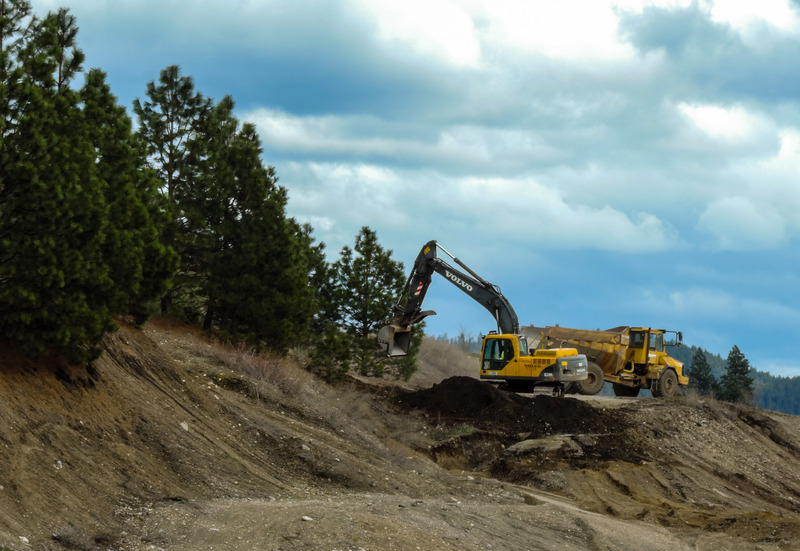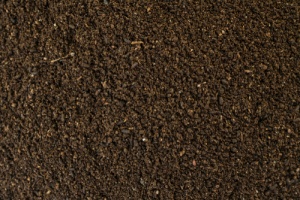Ready for some screened topsoil? All screened topsoils are not alike. As you read below, discover the 4 steps important in processing your screened topsoil. The information below, will assure you get the best screened topsoil for your money.
Start With Great Topsoil Material
To provide for great screened topsoil, you need great base material. Great base material is a must for great screened topsoil. What is great topsoil material? Topsoil material is the ground cover material. The ground cover for topsoil is approximately 5 – 12 inches. Topsoil is where you find the highest concentration of organic matter. Organic matter contains soil organic carbon, the basis of soil fertility. This allows for the release of nutrients for plant growth. Nutrients is what provides for improved plant growth. Improved plant growth is the desire of the topsoil buyer.
3 Steps to Accumulate Great Topsoil Material
As mentioned above, you need great topsoil base material for your screened topsoil. To accumulate the topsoil base material, there are 4 initial steps;
1. Project Site Location
All project locations are not the same. Some site work locations, do not have suitable topsoil material. Suitable existing nutrients and carbon are important for future topsoil processing. The excavation site must have the suitable material to process topsoil. With the suitable topsoil material, the contractor can plan for the future processing step. The experienced contractor can determine the quality of the topsoil material. Be sure to work with experienced contractors.
2. Site Clearing
Clearing and grubbing is a crucial phase in any kind of land development. In land development you often demolish an existing structure or prepare for some new site for construction. With land development you will clear and grub the site first. This allows for continued land development. This phase allows for the separation of excavated materials. The excavated materials includes root matter, stumps, logs, brush and debris. This initial removal process provides for the base material, unscreened topsoil.
3. Topsoil Base Material Haul Off
The unscreened topsoil is now free of logs, brush, and debris. With the topsoil free of debris, we can continue with material processing. The topsoil can now be transported to the screening facility. It is at this location we can achieve the high quality screened topsoil we desire.
Processing Topsoil
Topsoil processing is perhaps the simplest form of treatment. It is a vital precursor to many soil remediation and enhancement procedures. This procedure removes solid metals, timber and non-biodegradable materials (plastics, etc) from the soil. Foreign organic materials can inhibit other remediation process. Screening produces a consistent topsoil mass. Consistent topsoil provides for a better project result. Consistency in product is achieved with well maintained screening equipment. The highly maintained screening equipment provides for improved screened material. This allows for improved project results. This is achieved with the placement of high quality screened topsoil.
2 Types Screening Machines
Trummel Topsoil Screener
The trommel screen is a machine with a rotating circular drum. Imagine an elongated clothes dryer on it’s side. The drum has defined holes. As the drum rotates the smaller materials cascade out of the drum holes. This smaller materials is the screened topsoil. The screened topsoil is deposited onto a conveyor belt. The conveyor belt moves the topsoil to a stockpile location. The screened topsoil is ready for delivery.
Vibratory Topsoil Screener
Vibratory screeners are usually a track-mounted machine. Industry professionals call this the screening plant. The track-mounted screening plant has a horizontal shaker screen. Operated by manual or wireless remote control. This has a triple shaft, triple deck shaker screen with a unique direct feed approach. This triple shaft allows for better material separation. Improved material separation allows for a cleaner material. Cleaner materials may be necessary with some project demands. Different screens can achieve cleaner materials. There are 5 types of screens for material screening;
5 Types of Material Screens
- Wire cloth screens have a square screen used in most material screening operations.
- Grizzly screens are a heavy duty screen. Heavy duty screens are necessary for rough screening operations. Rough screening demands the use of 1″ thick steel. 1″ steel is in order for the rough screening demands. With 4″ to 6″ spacing of the 1″ steel you can count on strength and durability.
- Punch plates are plates of steel with holes. The punch plates typically have holes hexagonal, circular or square in shape. Typical sizes range from 3″ to 6″ opening. The openings allow for rough screening.
- Finger screens are screens that cascade over each other. This prevents clogs on the screen. This screen design allows for the screening compost, landfill material or mulch.
- Harp screens are a straight wire screen with slots. The screen wire is under tension from both ends. This screen has no cross members to hang up material. Its openings are long narrow slots. The wires allow for some vibration, which increases production. This wire design works best in dry screening operations. The wires are typically spaced 3/4″ or smaller. The smaller openings are only available with the shaker screens.
2 Tips For Screened Topsoil Quality
- With the successful screening and stockpile of screened topsoil, proper of care of material is a must. Material care provides for improved product quality. To maintain product quality we tarp our screened topsoil. The tarp cover will protect the topsoil from inclement weather conditions. Dry topsoil will provide for a better finished grade and the application of seed, sod, vegetation or plants.
- We do not have huge quantities of material stockpiled. We screen material as customer demand warrants. This provides you with fresh screened material for your project.
Topsoil Truck Hauling
You do not want to receive any contaminants with your screened topsoil. To receive contaminant free topsoil, be sure your supplier uses clean dump trucks. Dump trucks with the intended use of dirt hauling are preferred. For screened organic topsoil contact Dirt Connections.
Choosing Quality Screened Topsoil
When selecting the best screened topsoil for your landscaping or construction project, focus on key quality indicators. Look for screened topsoil that is free of contaminants and debris. High-quality topsoil should come from a reliable supplier using clean dump trucks. Ensure the topsoil is processed with well-maintained screening equipment, like Trummel or Vibratory Shakers. For the best results, choose topsoil that has been freshly screened to meet current demand. This ensures optimal consistency and freshness, crucial for successful planting and soil improvement.
Summary
Start with great topsoil base material. Remove the root matter, stumps, logs, brush and debris from the topsoil. Transport the unscreened topsoil to the screening plant. Be sure the screening machines are well maintained and properly serviced. There are two types of screening machines, the Trummel and Vibratory Shaker. Only screen enough material to meet the daily/weekly customer demands. Screening as you go will keep your topsoil material fresh for your customers. Use clean dump dump trucks to transport topsoil. Clean dump trucks prevent the introduction of contaminants to the topsoil. The steps outlined above provide for high quality screened topsoil delivered to you. Dirt Connections can provide you with the screened topsoil you need, order today.











































